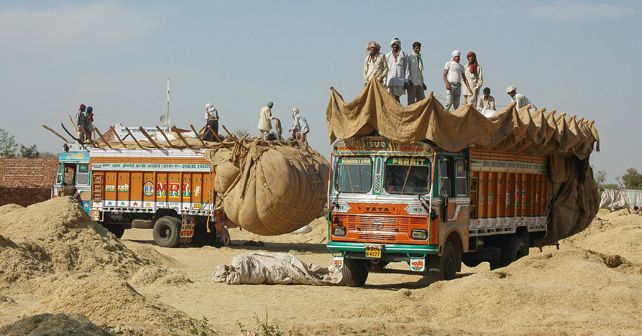
The AAUI President wonders why authorities don’t take action against overloaded vehicles – especially considering the damage they cause and the threat they pose.
The Motor Vehicles Act of India mandates that operators of all vehicles – automobiles, trucks, buses, motorcycles and mopeds – operate under its rules. But rules and laws also require an enforcement agency responsible for ensuring their smooth implementation. And therein lies the problem, at least one part of it. The role of the traffic police is to be vigilant in regards to traffic violations, but it appears that they don’t take the matter of frequent traffic violations by truck and bus drivers seriously.
Driving under the influence of alcohol at night has more or less become a common habit amongst truck drivers. The sights of trucks parked near dhabas and wayside wine shops on highways are quite common nowadays. In the absence of surprise inspections by the authorities at such spots, the number of drivers under the influence of alcohol is on the rise. Highway surfaces are not consistent in their design and quality, and this lack of consistency can cause drivers to suddenly lose control of the vehicle as and when the surface changes – for instance, from tarmac to gravel – causing serious accidents. And driving under the influence of alcohol only adds to this possibility, making it almost inevitable.
Another serious problem is the gross overloading of heavy vehicles. This not only increases the possibility of accidents, but also damages our road infrastructure – especially in a country where most of our roads lack quality. The problem of overloading of heavy vehicles is so serious, owing to the extensive damage it causes, that it should be penalised by the imposition of heavy fines and imprisonment – especially to repeat offenders.
Unfortunately, our system is such that once a truck driver pays a fine for overloading, he’s free to carry on the rest of his journey. The overloaded vehicle, then, becomes a visual symbol of the violation of traffic rules – which consequently encourages other drivers and frees them from the fear of the law.
While the problem is apparent, the solution is not. A practical solution of a problem of such a severe nature requires a comprehensive study and understanding of the various issues surrounding the problem. The first step should be the unconditional and honest execution of powers given to the enforcement agencies by the Motor Vehicles Act – which prohibits the operation of overloaded vehicles. As it happens, in most cases there’s a lack of such enforcement measures, which gradually encourages vehicle owners to overload vehicles just to save a few bucks. The law does impose a minimum fine of Rs.2,000 and an additional amount of Rs.1,000 per ton of excess load, along with the charges for offloading the extra load, but we hardly see this being implemented.
The extent of severe road and bridge damage caused by overloaded vehicles is estimated to account for a substantial percentage of the overall damage of the Indian transportation network. This means that overloading is, to a huge extent, responsible for the destruction of our road infrastructure. Premature damage of roads means a rise in maintenance costs, thus increasing the overall expenditure on roads. Overloading of vehicles also has serious implications in terms of road safety – an overloaded vehicle is less stable, has less steering control, requires longer stopping distances, causes overheating of tyres and diminishes the driver’s operating space. These dangers increase with an increase in the speed of an overloaded vehicle, or when the driver does not follow basic road safety rules. To put it in simple terms, an overloaded vehicle is not only a threat to other vehicles on the road but also to itself.
To deter road users, the authorities must follow the following steps: careful monitoring of a weighbridge installation programme; deployment of traffic police for short periods but at higher frequency over as many different weighing sites as possible; devising a portable screening system to monitor alternate routes to divert overloaded trucks to pre-assigned weighbridges; launching awareness programmes from time-to-time to educate transport companies and truck drivers regarding the detrimental effects of overloading on the economy and road safety; and, lastly, ensuring unconditional penalties as prescribed by the law in the case of a violation.
T.K. Malhotra is the President of the Automobile Association of Upper India (AAUI).























Write your Comment